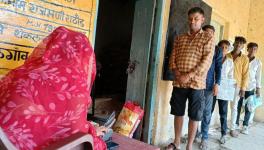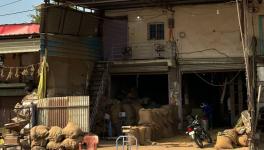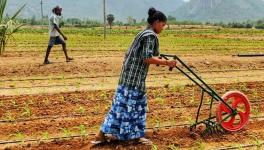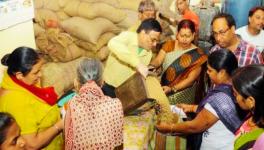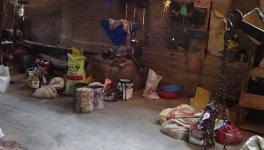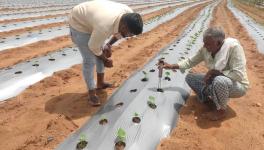Odisha Model, Ecosystem Services Incentive and way Forward to Mainstreaming Millets
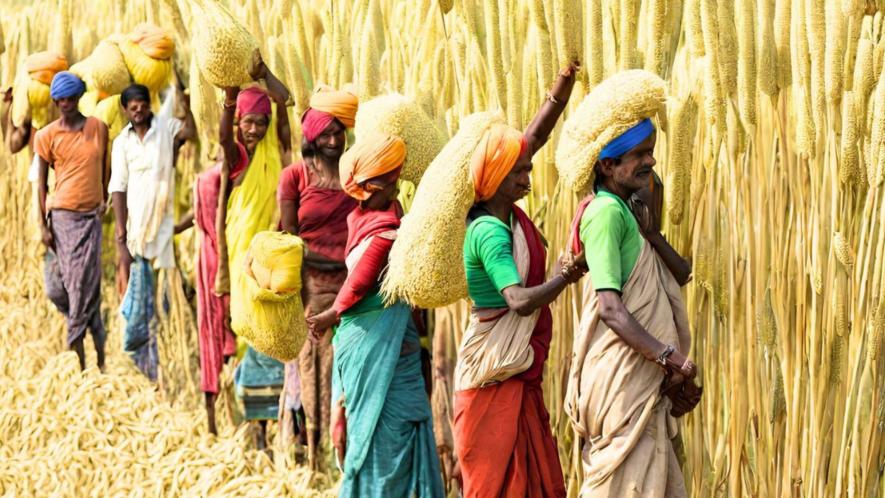
A group of millet farmers working (Photo - Representative image/ AI Canva)
Pune, Maharashtra: When the United Nations General Assembly declared 2023 as the International Year of Millets, it started conversations around these so-called forgotten foods — high in nutrition and dietary fibre, but with relatively lower carbon and water footprint than wheat and rice. Despite traditional millets being easy to grow without chemical fertilisers and pesticides, farmers are still not enthusiastic about taking up their cultivation.
The overall production of traditional ragi (finger millet) in India was 1.59 million tonnes in 2022-23 against the 1.7 million tonnes in 2021-22. Compared with the emerging hybrid varieties, the production of traditional varieties is low. “We do not have a large ragi production,” attests Sachin Jain from Vikas Samvad, an organisation in Madhya Pradesh working on issues of child health and food security.
Farmers sell millets mostly to middlemen, but do not benefit much even as urban health-conscious consumers pay high prices when buying them. “We need to optimise the processing of millets from harvesting to procurement and distribution,” says Jain, while suggesting that the millet ecosystem should be more decentralised with panchayats involved in policy decisions.
"The government appears to have good intentions to increase millet demand for the benefit of farmers as well as consumers. To achieve this, the first step would be to increase the public procurement of millets. However, at present, government procurement of pearl millet and sorghum is only 1 to 3% of their total domestic production, as compared to 45 to 70% for wheat and rice. The situation of finger millet is a bit better, with about 15% of the total production being procured by government agencies. It is good news that the government has planned to procure more than two million tonnes of millets during 2023-24, however coordinated efforts between Central and state governments will be needed to achieve this," reads an opinion piece by ICRISAT researchers.
Developing high yielding hybrid varieties of millets is a way to ensure more production, but it comes at a cost. “As productivity increases, nutrition levels decrease,” Devinder Sharma, a food policy analyst and researcher of Indian agriculture, tells 101Reporters. He says a steep nutritional decline between 16 and 45% has been found in hybrid seeds, mostly developed by agricultural institutes and colleges.
“Copper is one of the essential minerals good for the body. Some of the hybrid varieties of millets have shown a significant fall in copper levels compared to the traditional millets,” he adds.
The sidelined grain
High-yielding varieties of wheat and rice were introduced during the Green Revolution of the 1960s, in a bid to alleviate hunger and poverty. Despite a slew of agricultural initiatives and technological advancements aimed at increasing productivity, ensuring food security, income and employment generation, reducing price volatility and attaining regional balance in the crops, the impact was not all rainbows and unicorns.
“Post-Green Revolution, the production of wheat and rice doubled due to initiatives of the government, but the production of other food crops such as indigenous rice varieties and millets declined,” reads the research article, Impact of Green Revolution on Indigenous Crops in India. Millets started diminishing from the agricultural landscape as farmers shifted to wheat and rice. Being commodities listed under the Public Distribution System (PDS), the demand for wheat and rice increased over time, providing farmers an incentive to cultivate them.
“Developing high-yielding varieties was necessary at that time. Since the production rate of traditional millets is low even today, we need to develop hybrid varieties with minimum decline in nutrients when compared to that of traditional varieties. The fact that millets are primarily known for their health benefits should be taken into consideration while developing the hybrids,” Jain says.
Social stigma was another factor leading to a decline in demand as millets have long been associated with rural diets and hence considered the food for the economically disadvantaged. They are often seen as inferior to rice and wheat. Millets also faced more discrimination in urban and upwardly mobile circles than in rural areas.
The stigma is rooted in cultural biases and misconceptions, perpetuating the idea that consuming millets is a marker of poverty or a lack of access to more refined food choices. “Overcoming social stigma requires efforts to raise awareness about the nutritional benefits of millets, promote their versatility in culinary applications, and challenge prevailing stereotypes to encourage a more inclusive and sustainable food culture in India. Civil society organisations and NGOs were successful in erasing this stigma. Today, the millet market is targeting urban, health-conscious people who are willing to pay a higher price for the right nutrition,” says Sharma.
“The first step to incentivise farmers and mainstream millets would be by bringing them under the PDS. This way the producers will also get to consume them. Right now, the millet market is targeting the urban buyers, but rural communities are the ones that need them the most,” says Jain, while agreeing that Odisha Millets Mission (OMM) can be a good model to emulate. There have been talks about including millets in the PDS in Karnataka, Meghalaya and Telangana, but only Odisha is doing it practically.
“Special Programme for Promotion of Millets in Tribal Areas or Odisha Millets Mission started in 2017 to address nutritional security in Odisha through increased millet production and consumption, especially for the indigenous [and often vulnerable] communities. Other important objectives of the mission were to promote machinery for post-harvest processing, improve the productivity of millets, include millets in the PDS, Integrated Child Development Services [ICDS] and other large scale government programmes, facilitate the export of millets and millet-based products from Odisha, and facilitate Farmer Producer Organisations and self-help groups [SHGs] through government departments geared towards technical product and process innovations,” write Pritha Banerjee and Shomita Kundu in their field notes for International Growth Centre.
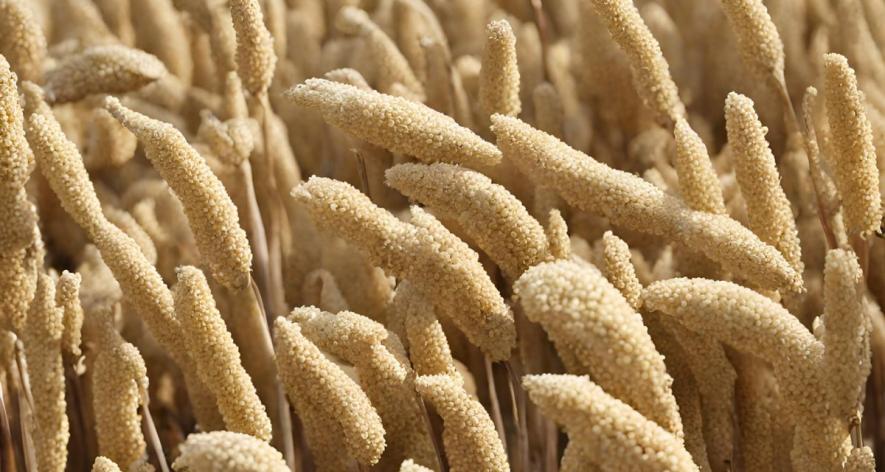
A picture of millet crop (Photo - Representative image,AI Canva).
Emulate, empower
According to OMM website, millet farmers get a maximum incentive of Rs 26,500 per hectare over a period of five years. If the method of cultivation used is System of Millets Intensification for ragi and non-ragi millets, incentives are Rs 10,000, Rs 7,500, Rs 5,000, Rs 2,000 and Rs 2,000 from the first to fifth year, in that order. For ragi cultivation using line sowing or line transplanting method, incentives are Rs 7,500, Rs 5,000, Rs 3,000, respectively, in the first three years and Rs 2,000 in the next two years.
Besides providing tractors, weeders and other equipment to farmers, OMM has optimised mandi procurement mechanisms for millets. "OMM aims at providing protection against losses. Price benchmarking has been done for non-ragi millets, too. We are promoting both hybrid and local seed varieties based on the geographical conditions of the region," says an OMM official, on condition of anonymity.
"Apart from PDS, millets have been included in ICDS and other government schemes," the official adds, while mentioning how millets have been promoted at the anganwadi level. OMM has also attempted to introduce millets in hospital foods, hotel menus, gymnasiums and health and wellness centres.
The products made out of millets have undergone value addition. Women SHGs in the state have turned millets into an income idea. "A farmer in Odisha is better off because of OMM," agrees the official.
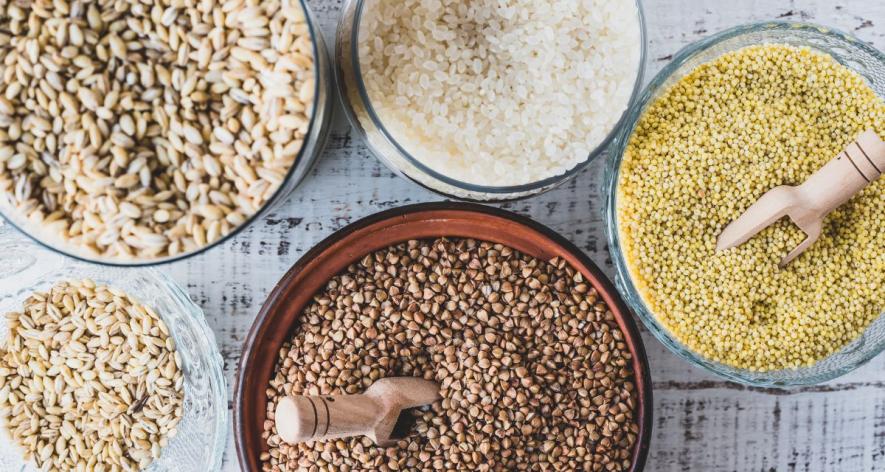
Millets provide a wide range of health benefits (Photo - Representative image, Canva).
A much-needed incentive
According to the National Academy of Agricultural Sciences, “ecosystem services are the benefits that an ecosystem provides to the society through ecosystem functions, that is the capacity of natural processes and components to provide goods and services to satisfy human needs directly or indirectly.”
Sharma thinks farmers should get this incentive for taking up millet cultivation. “They should be incentivised and paid for the ecosystem services that they are providing to the society through millet agriculture. Millets are good for public health, environment and soil since they do not require any chemicals to grow,” he points out.
“Why cannot we give this minimum cost to the farmers for protecting the environment,” he questions, while stating that the United Nations Environmental Programme already has a framework in place for valuation of ecosystem services, but it has not been used for any crop till date in India.
Health benefits
Millets were a part of India’s staple diet up until a few years ago. Later, both urban and rural communities strayed away from their traditional diets and turned to wheat and rice. “The food plates in rural pockets of India looked much diversified before. People used to make rotis out of whichever millet was predominant in the region. For example, jowar [sorghum] or bajra [pearl millet] bhakri. But nowadays wheat and rice are distributed to them under different schemes,” Preetilata Gaikwad, manager, women empowerment and health, Watershed Organisation Trust (WOTR).
Over 6,000 people attended the anaemia detection camps that Preetilata and Prithviraj Gaikwad, senior agriculture officer, climate resilient agriculture, WOTR, held in the villages of Maharashtra in 2021-2022. “Due to lack of good nutrition, pregnant women are increasingly being detected with iron deficiencies leading to anaemia,” they say.
Based on their field visits, the researchers observed that there was a shortage of food despite the distribution of rice and wheat free of cost under several schemes, including the Pradhan Mantri Garib Kalyan Anna Yojana. There were cases where women took home food from anganwadis allotted for a single person, but the whole family depended on it. Children could be snacking on packets of chips costing Rs 5 or 10 to fill their appetite, instead of a wholesome meal. Even adolescent girls were not getting periods regularly due to a lack of balanced diet.
“Millets such as ragi, bajra and jowar are rich in iron, calcium, magnesium and fibre. Including millets in the diet can help combat nutritional deficiencies, especially prevalent issues like iron-deficiency anaemia in pregnant women,” says Karishma Shah, a certified integrated nutritionist and health psychologist, when asked whether the high malnutrition levels in Maharashtra were connected with their non-consumption of millets.
On the impact of the International Year of Millets campaign, Sachin Jain says, "It certainly has started many conversations. We are in a transition phase. The solution is to optimise the processing of millets from production to consumption. Then it will successfully reach the demographic that needs it the most."
(Pranoti Abhyankar is a Maharashtra-based freelance journalist and a member of 101Reporters, a pan-India network of grassroots reporters.)
Get the latest reports & analysis with people's perspective on Protests, movements & deep analytical videos, discussions of the current affairs in your Telegram app. Subscribe to NewsClick's Telegram channel & get Real-Time updates on stories, as they get published on our website.











